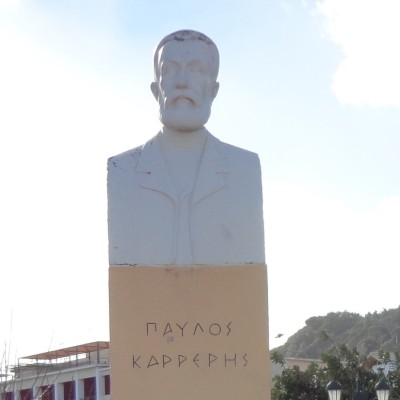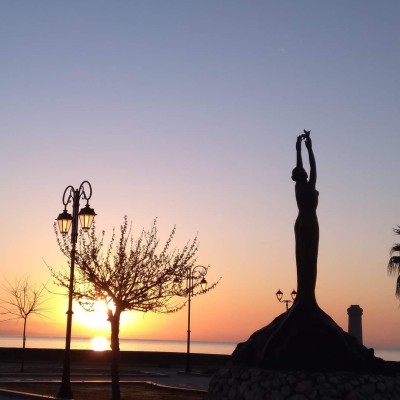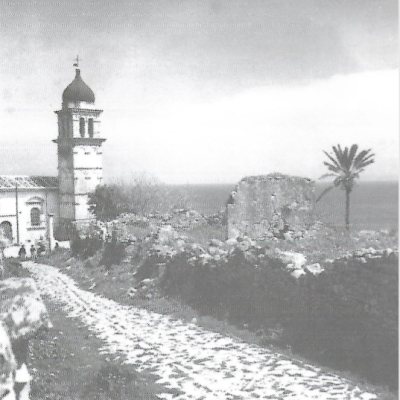Guided tour on the eastern foot of Castle Hill.
Starting from Kalvos Square and going up into Kourtsola Street we will move to the outskirts of the hill of the Castle, where there is the Church of Panagia Pikridiotissa and the ruins of the church of Agios Dimitrios of Kanesis. In the pre-Venetian era there was a harbour.
On the left of the square there was the church of Agios Nikolaos of the Elderly since 1483. The icons of the temple are exhibited in the Museum of Zakynthos.
Philo-Zakynthian prefect Andreas Ioannou, in 1970, when he formed the area and named it Kalvos Square, he placed a votive marble column, the work of James Malate. Treated limestone cornerstones, originating from the temple, have been placed in the area of the square, while a marble inscription notes that Andreas Calvos was baptized in the church on July 18, 1792.
On the 50th anniversary of the earthquakes of August 1953, the Municipality placed a monument to the memory of the victims of the earthquake, a work by Dionysios Palma.
Leaving Kalvos Square we move towards Kourtsoula Street: The Kourtsoula or Dakourtsola family from the Dalmatian island of Kourtsola went to Corfu and from there to Kefalonia. Then they came back to Zakynthos in 1519. A member of the Family, Nikolaos Kourtsolas, whose name has been given to the street, left an important work of writing.
In modern times, after the earthquake, the uphill road became a point of racing of young bikers, where they competed against each other with the motorbikes. The road had become known as the uphill Perivolaria, by the nickname of a resident of the area, Aikaterini Haikalis.
Ascending Kourtsola we come across a shrine with an icon of Agia Varvara and the indication that there was a temple of the same name there.
A little further away there is the Church of Agioi Anargyroi, built by the lord Nikolaos Antoniou Chariatis in 1658. In the area where the temple existed, there are few ruins left.
Moving forward we are in front of the ruins of the church of Agios Georgios tsi Kypriana or Tsi Kalogries. In 1660 the priest Nikiforos Miliotis founded a nunnery next to the temple. The church and the monastery had surrounding walls. After the death of Miliotis, the monastery was led by a committee elected by the nuns and parishioners. In the earthquakes of 1893, the church was badly damaged and renovated in 1895. The despotic icon of Agios Georgios is preserved in the temple of Pikridiotissa. In the same area there is a well, named Tsypourgianas and on the well’s edge there are scratches of the rope that held the water buckets, when they dragged them out of the water.
Moving on we meet the church of Panagia Pikridiotissa. In an underground building, which was revealed when the foundations were dug, there were eight Doric style columns and inside a square building was a marble statue of Bacchus. One of the columns still exists today in the courtyard of the temple. During the Venetian occupation they had placed on the column a lamp to illuminate the road to the Castle, following Strada Gustigniana, which started from the city of Aigialos and led to Terra, the city that was inside the Castle. A marble block built by the late Nikolaos Varvianis in the church's bell tower, reminds of the incident with Colino and his son, according to which he decided to actively participate in the Greek Revolution.
In a short distance from the church of Panagia Pikridiotissa in the location of Keramidaki, there was the church of Panagia Gavalas or Gavalos or Gavalousa, built in the 15th century by someone named Gavalas of Cretan origin. The temple disappeared after the earthquakes of 1953. Fortunately, it did not burn. His artistic treasures were saved. It is mentioned that near the temple was the house of Anagnostaras, who had come to the island before the beginning of the Revolution of 1821.
A little further down from Pikridiotissa there was the church of Agia Anna. The church was built by the priest and hagiographer Frangiskos Kalergis in 1701. This temple was, also, destroyed in 1953 and its artistic findings are exhibited in the Museum of Zakynthos. Metropolitan Apostolos of Zakynthos had erected a housekeeping school and boarding school for young girls in the area of the church after the earthquake.
On the opposite of the temple was constructed the aqueduct which was supplying the city. A bit further away, there was the temple of Taxiarchis. His icons after the earthquakes of 1953 were transferred to the Zakynthos Museum. A boarding school was operating in place of the church during the time of the Metropolitan Kyros Apostolos.
Another temple in the area was the church of Agia Paraskevi of Halvatos where in the late 15th century many gypsies lived nearby. Dionysios Solomos was baptized in the church of Agia Paraskevi. That's where his father, Nikolaos Solomos, was buried. It was located where today the residence of Nikolaos Marinos – Xanthos is, behind the courthouse.
Near the temple was the house, where Angeliki Nikli, the mother of Dionysios and Dimitrios Solomos, lived. The priest of Agia Paraskevi, Petros Marinos, officiated the wedding on February 27, 1807, of Nikolaos Solomos with Angeliki Nikli, on the eve of the death of Nikolaos. It is reported that Solomos went to this church as a boy.
Politicians Konstantinos Lombardos and Nikolaos Kolyvas also lived here. This is where victorious celebrations began after the elections. His sister Kolyva Maria, served as president of the local branch of the Lyceum of Greek Women and with her care local costumes were sewed of the island worn by the high school students at various events.


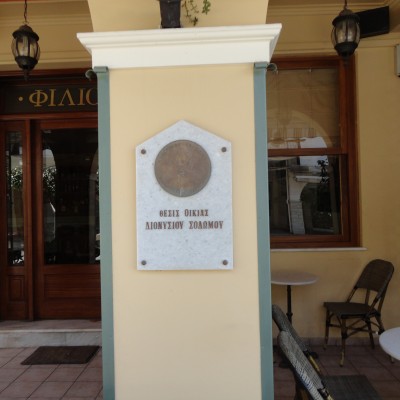
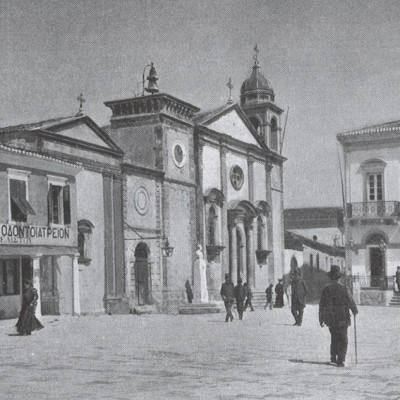
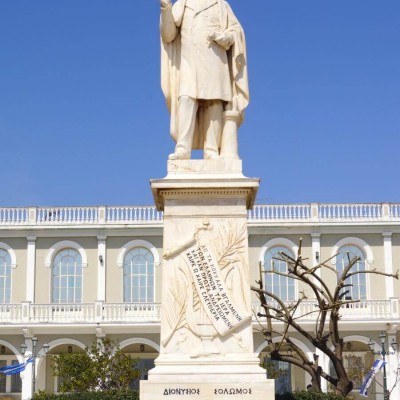

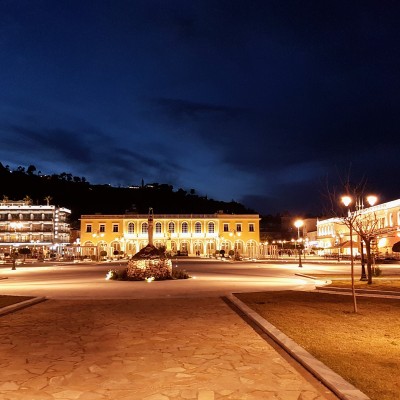
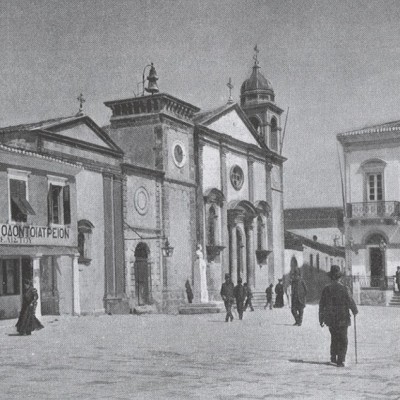
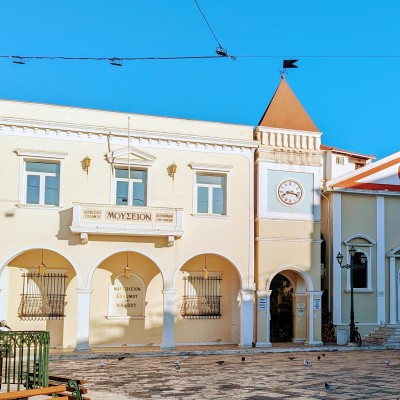
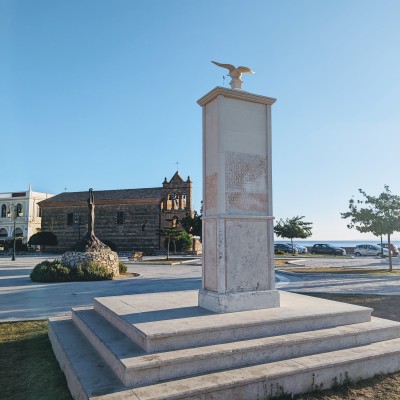



.jpg)
